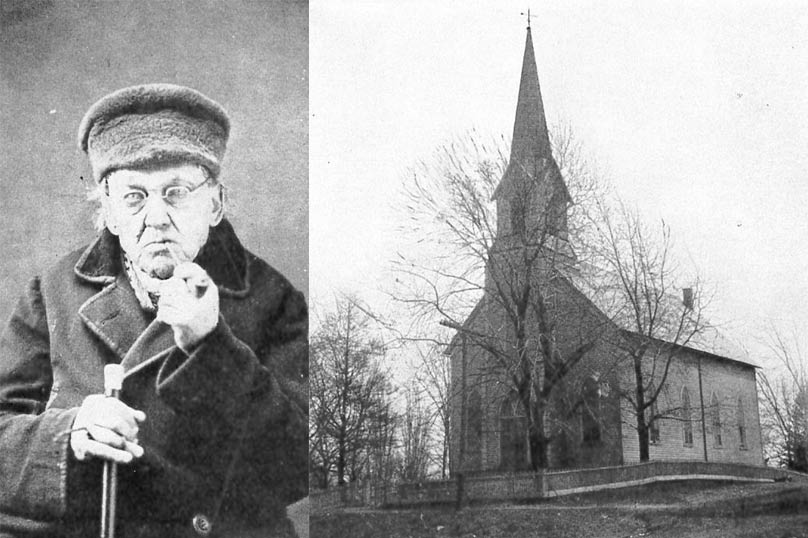
History of Stone Cottage Inn
Rev. Daniel Cranz came to America in 1825 from Germany. He served as Pastor of the Zion Evangelical Church for nearly 32 years (1836 – 1868). It has been said “His name was a household word and his life like ‘precious ointment’ and ‘sweet incense’ in the community.” He owned a farm a mile from the current owner’s homestead and lived in the Stone cottage till he passed away in 1876. He is buried in the old Winesburg cemetery.
Words From Our Guests
This property is amazing; very authentic to the time period in which it was built, modernized with all of the conveniences of this century! The outside and inside are beautifully decorated, cozy, comfortable and immaculate. The kitchen is well equipped for preparing meals, the beds are very comfortable with wonderful linens. The location is convenient for visiting surrounding areas, quaint villages as well as access to all services….There will never be another rental experience like this one!
– Martha R.
Webster, NY
Winesburg Ohio History
In the early 1800s in Dinstbach, Germany, a Lutheran Minister, Pastor William Schmidt, envisioned a Lutheran College in the United States. He educated his youngest son William and sent him to his older brother, Christian, who lived in Philadelphia, Pa. After talking to many different people about their goals for the college, they decided to start it somewhere in the backwoods and let it grow with the fledgling country.
In 1827 they began the adventure of finding the perfect place for the new college. The exact spot they decided on was what is now Winesburg. It reminded them of their own German village, and inspired them to forge a place where their fellow countrymen could do business in their mother tongue.
Before the men started building the college, Christian Schmidt’s house caught on fire and everything was destroyed, including the brass bound chest where he stored the money. The chest was never recovered and it is believed the fire was set to cover up a robbery. The dreams of a college in Winesburg lay in ashes.
Because of the loss of money, William had to go elsewhere for financial aid. He was successful and founded what is now Capital University in Columbus, OH.
In 1832, William Schmidt surveyed and plated the town of Winesburg in thirty-two plots, and named it in honor of the town of Weinsburg, Germany.


Winesburg in Literature
Sherwood Anderson committed Winesburg, Ohio to memory for generations of American literature fans with his 1919 collection of short stories entitled “Winesburg Ohio: A Group of Tales of Ohio Small-Town Life.” Although based on the author’s recollections of a childhood in Clyde, Ohio, the book was meant to portray a fictional town. Known as one of the earliest examples of Modernist literature due to the fact that it emphasizes the psychological insights of it’s characters over plot line, it is the ideal literary companion to your visit in Winesburg. Thousands of fans of the critically acclaimed short story collection have visited Winesburg Ohio throughout the years.
